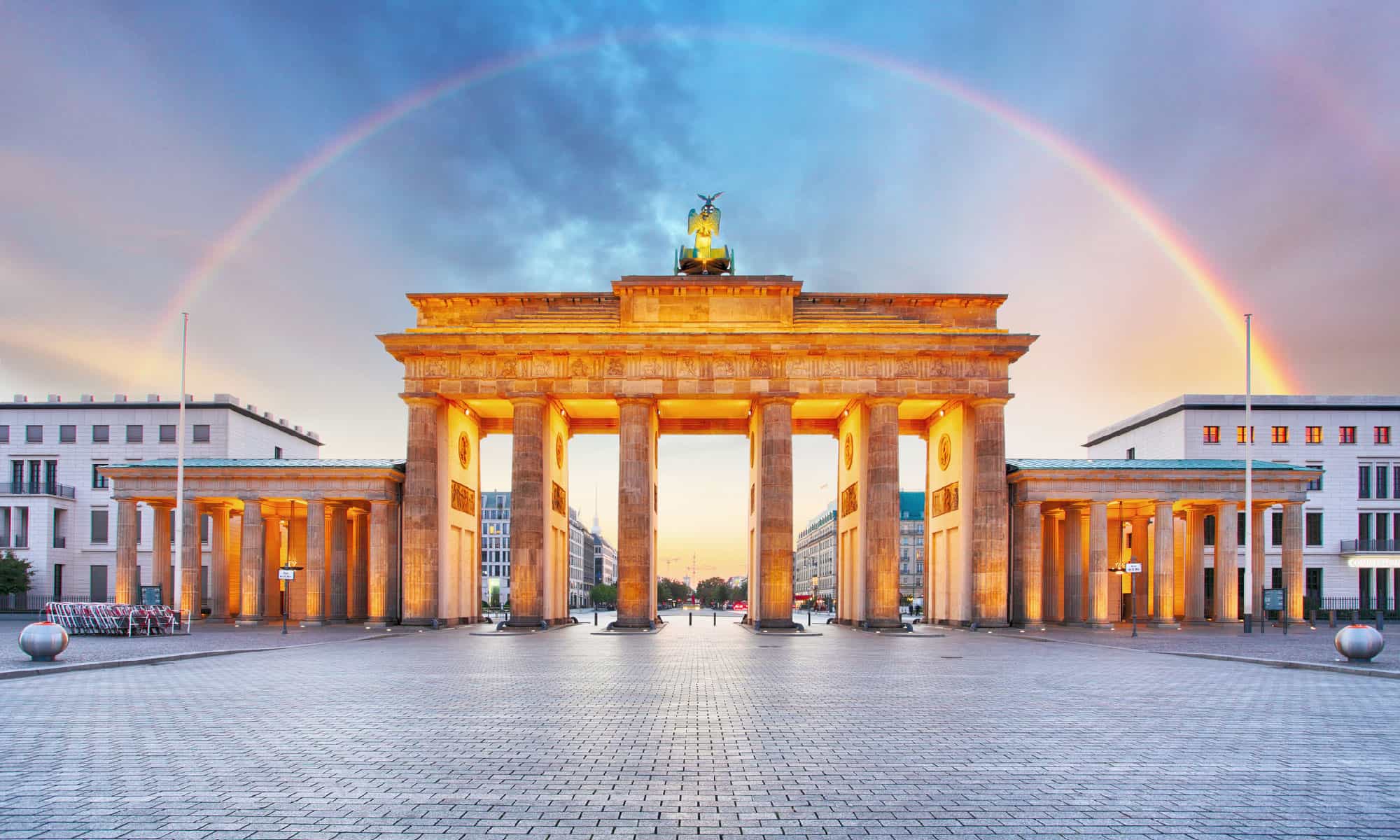With a population of a little less than 84 million, the Federal Republic of Germany is Europe’s second most populous country and ranks 19th in highest populated countries in the world. In Europe, only Russia has more people. Germany also boasts Europe’s largest economy and is recognized as a global powerhouse. Found in the center of Europe, it’s bordered by nine countries.
1. Denmark
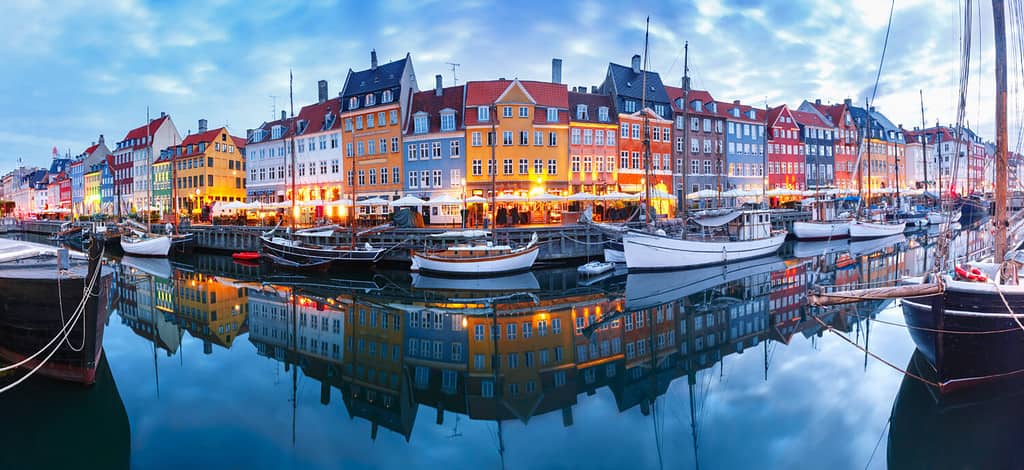
Nyhavn is found in Copenhagen’s Old Town.
©kavalenkava/Shutterstock.com
The Kingdom of Denmark is a Nordic country like Sweden, Finland, and Norway though it’s not found on the Scandinavian Peninsula. It is found on its own peninsula, called Jutland. The country is 16,580 square miles in total and shares an 87-mile border with Germany. Its climate is surprisingly temperate, with mild but damp winters and cool summers.
Denmark is a constitutional monarchy with a parliamentary system, much like the United Kingdom, and its capital is Copenhagen. As of 2023 its head of state is Queen Margrethe II, the head of government is the Prime Minister, Mette Frederiksen, and its population is 5,946,984. Denmark is a member of the European Union and has been a member of NATO since 1949. Despite being a member of the EU, the currency is still the Danish krone, though its value is pegged to the euro. The flag of Denmark is a thin white cross on a red ground.
2. Poland
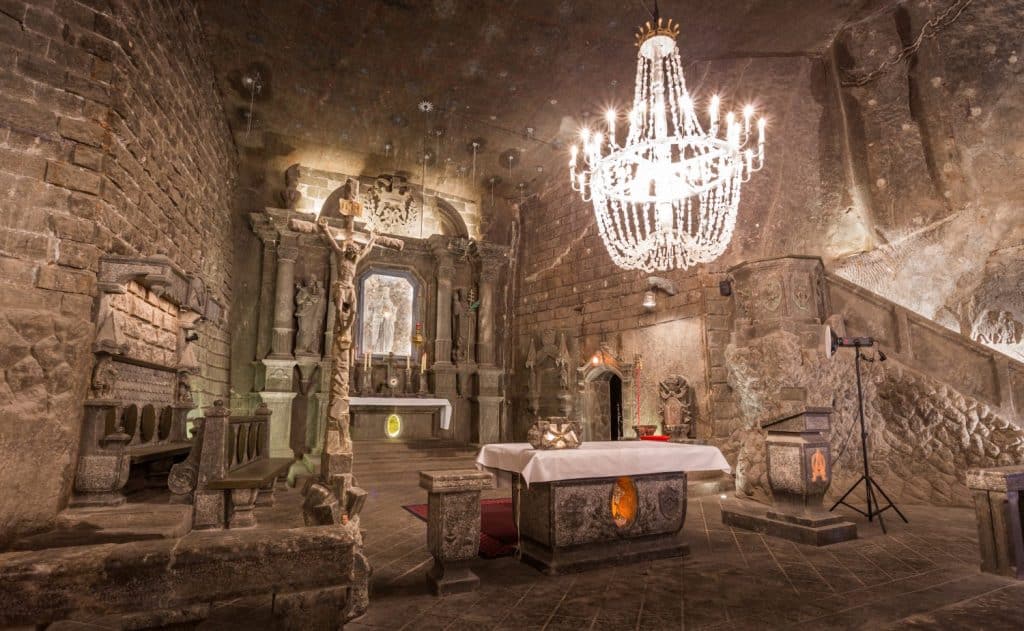
Poland’s Wieliczka Salt Mine has chapels and statues carved entirely out of salt.
©Kanuman/Shutterstock.com
The Republic of Poland is found to the east of Germany, with whom it shares a 290-mile border. Poland has a total area of 120,700 square miles, and its 2023 population was estimated to be 38,036,118. The climate of Poland features fairly hard winters with lots of snow, and mild summers with lots of rain.
After many years of being a Communist satellite of the Soviet Union, Poland is now a parliamentary republic. It is a member of both NATO and the European Union, and its currency is the zloty, a word that derives from the Polish word for “golden.” As of 2023, the head of state is President Andrzej Duda, and the head of government is Prime Minister Mateusz Morawieckl. The capital is Warsaw, and the country’s flag is white on the top half and red on the bottom half.
3. Czech Republic

Prague’s Charles Bridge was named after King Charles IV.
©Oleksiy Mark/Shutterstock.com
Also called Czechia, this country that split amiably from Slovakia in 1993 shares a 437-mile border with its former foe Germany. The Czech Republic is now a member of both NATO and the European Union, joining in 1999 and 2004 respectively. It is 30,452 square miles with a population estimated to be around 10,827,529 as of 2023, and its currency is the Czech koruna. The climate is temperate with cold and clammy winters and cool summers.
Though a Soviet satellite for much of the 20th century, the Czech Republic is now a parliamentary republic. Its head of state as of 2023 is President Petr Pavel, and its head of government is the Prime Minister, Petr Fiala. The flag of Czechia is the same as the flag of the former Czechoslovakia. It’s a blue isosceles triangle to the left that intersects two equal-sized horizontal bands. The top band is white, and the bottom is red.
4. Austria
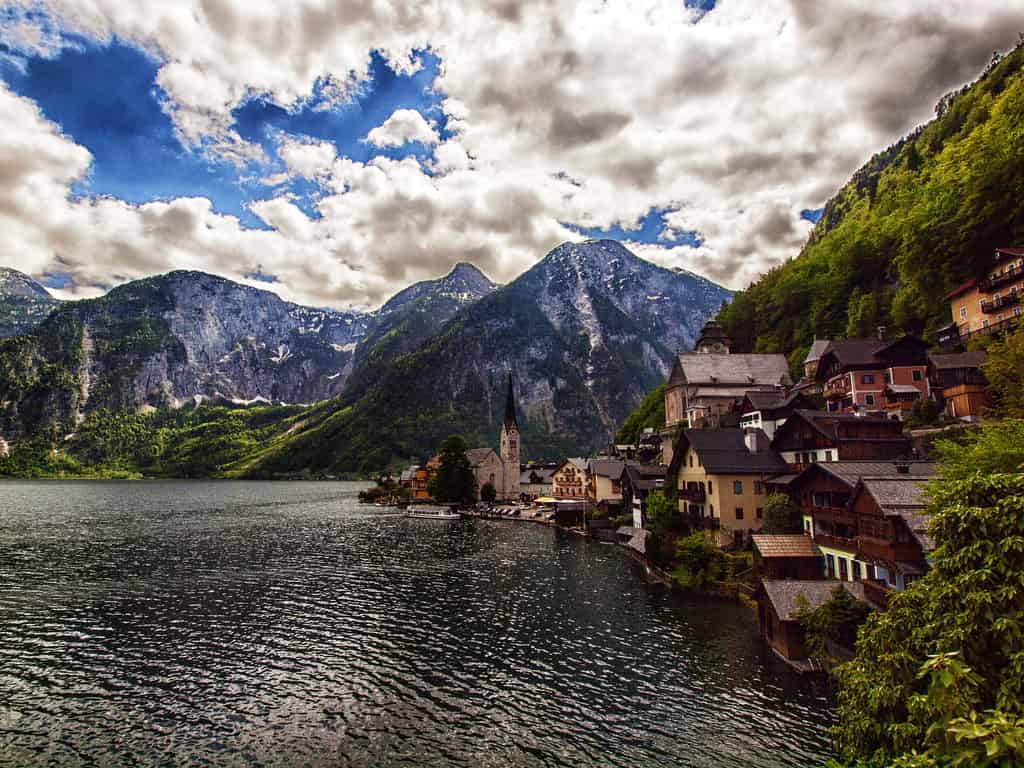
Beautiful Austria is another country that shares a border with Germany.
Austria shares not just a 498-mile border with Germany but also its language, sort of. The official language is Austrian German. Once the center of the mighty Austro-Hungarian Empire, the country is now 32,383 square miles and as of 2023 has a population of 8,940,860. This makes it a surprisingly small country. It is about the same size as South Carolina and has a smaller population than Los Angeles County. Austria is landlocked and has a temperate climate with cold, wet winters and moderate summers.
The Republic of Austria is a federal parliamentary republic. Its capital is Vienna, and as of 2023 its head of state is President Alexander Van der Bellen, and its head of government is Karl Nehammer, the Chancellor. Austria has been a member of the European Union since 1999, and its currency is the euro. Its flag is red with a horizontal white band across the middle.
5. Switzerland
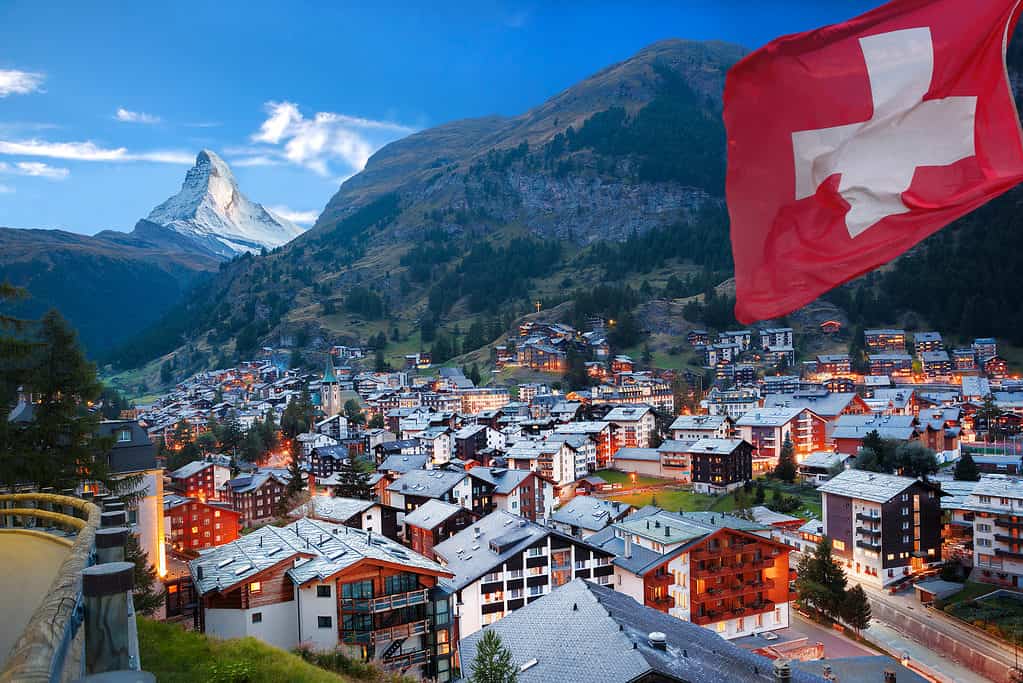
The village of Zermatt is nestled among the Swiss Alps.
©iStock.com/extravagantni
Famous for its natural beauty and neutrality, Switzerland shares a 216-mile border with Germany. It is 15,940 square miles and has an estimated population of 8,902,308 as of 2023. It only became a member of the United Nations in 2002, and actually doesn’t have a capital, though its capital is informally recognized as Bern. The country also has four official languages. They’re German, French, Italian, and Romansh. Romansh is a Gallo-Romance language that’s a descendant of the Latin spoken in the Roman Empire.
This landlocked country is also famous for its beautiful mountains, specifically the Alps and the Jura. These mountains affect its climate, but overall Switzerland’s climate is temperate. Its winters are cold and snowy, and its summers are warm and humid. Switzerland’s highest point is Dufourspitzein at 15,203 feet. This peak is found in the Alps.
Switzerland is a federal republic. President Alain Berset is both the head of state and the head of government. There is universal suffrage for citizens over 18, but women didn’t get the right to vote until 1971. The country was founded on August 1, 1291, and August 1 is a national holiday. The currency is the Swiss franc, and the flag is unusual in that it’s a square with a robust white cross in the center of a red background.
6. France

The spectacular Pont Alexandre III was named after a Russian czar.
©Production Perig/Shutterstock.com
Once mortal enemies, France and Germany now share a peaceable 260-mile border. France is a big country at 248,573 square miles with a 2023 population estimated to be around 68,042,591. The Republic of France is not only found on the European continent but in the regions, or departments of French Guiana, Guadeloupe, Martinique, Reunion, Mayotte, and many others. Five of these regions have exactly the same rights and status as regions in European France.
France’s capital is Paris, and its government is described as a semi-presidential republic. As of 2023, the head of state is President Emmanuel Macron, and the head of government is Prime Minister Elisabeth Borne. The currencies are both the euro and the franc. France sits on the United Nations’ Security Council as a permanent member and belongs to the EU, NATO, the G-7, and the G-20.
Much of France has cool winters followed by mild summers, though the areas along the Mediterranean enjoy mild winters but hot summers. Now and again these areas are buffeted by the mistral, a cold, dry, and powerful north wind. Other regions such as French Guiana and Reunion have tropical or subtropical climates. The flag of France is the famous French tricolor, which has three vertical bands of blue, white, and red (from left to right).
7. Luxembourg
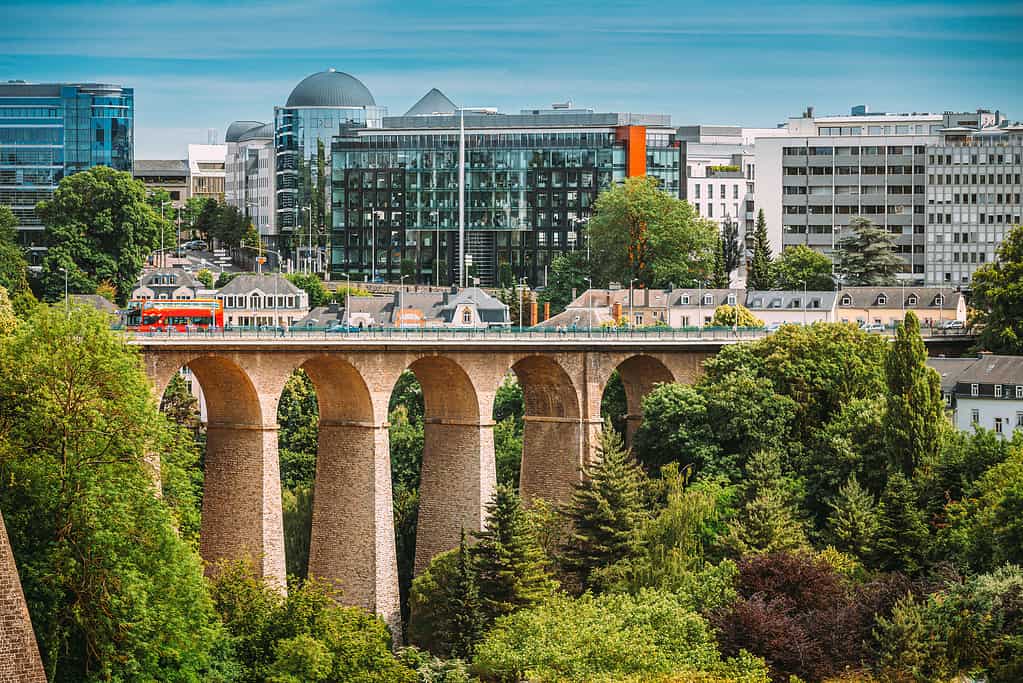
The capital of Luxembourg has the same name as the country. Here’s a view of the Luxembourg Viaduct.
©Grisha Bruev/Shutterstock.com
Tiny Luxembourg is only 998.6 square miles which means it’s even smaller than America’s smallest state, Rhode Island. It has an estimated population of 660,809. An ancient country, Luxembourg was founded in 963, and its history was a bit turbulent until the mid-20th century. It has been a member of NATO since 1949 and was one of the six countries that established what would become the European Union. Its currency is now the euro.
Like France, the Grand Duchy of Luxembourg and Germany were once enemies, but now they share a quiet 79.5-mile border. Sandwiched between Germany and France, the country has a continental climate, which means its winters are mild and its summers are cool.
Landlocked Luxembourg is a constitutional monarchy. As of 2023 its head of state is Grand Duke Henri, and its head of government is the Prime Minister, Xavier Bettel. The capital of Luxembourg is Luxembourg, and its official language is Luxembourgish, which is a species of German. The second most popular language is Portuguese. Its flag is made of three equal-sized horizontal bands. The top one is red, the middle is white, and the bottom is sky blue.
8. Belgium
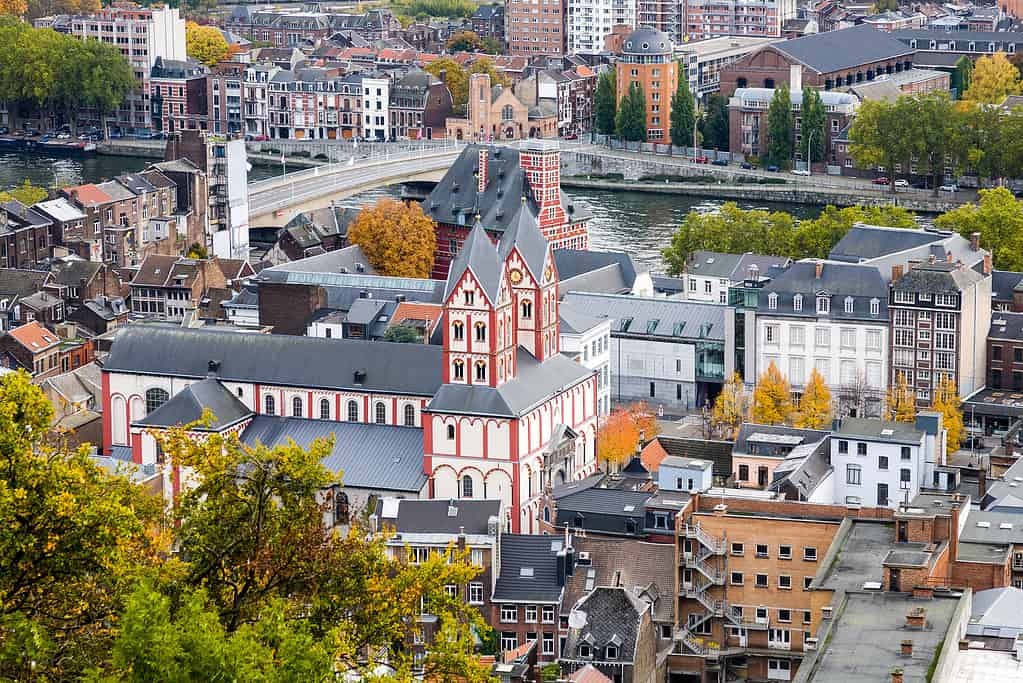
You’ll find Liege in Wallonia in the eastern part of Belgium.
©elifranssens/ via Getty Images
The Kingdom of Belgium was once part of the Netherlands but gained its independence in 1830, only to be occupied by Germany in both World Wars. Now it’s both a member of the EU and NATO. Belgium and Germany now share a peaceful 83-mile border. One of its three official languages is German. The others are French and Dutch.
Belgium is only 11,849 square miles but has about 11.5 million people as of 2023, which makes it one of the densest countries in Europe. Its climate is rainy and humid most of the year, but its winters are mild, and its summers are cool.
The country is a federal parliamentary democracy that operates under a constitutional monarchy. Its head of state is King Philippe, and its head of government is Alexander De Croo, the Prime Minister. There are also seven deputy prime ministers. The capital of Belgium is Brussels. The country’s flag is more of a square than a rectangle and is made up of three vertical, equal-sized bands. From left to right, they are black, yellow, and red.
9. The Netherlands
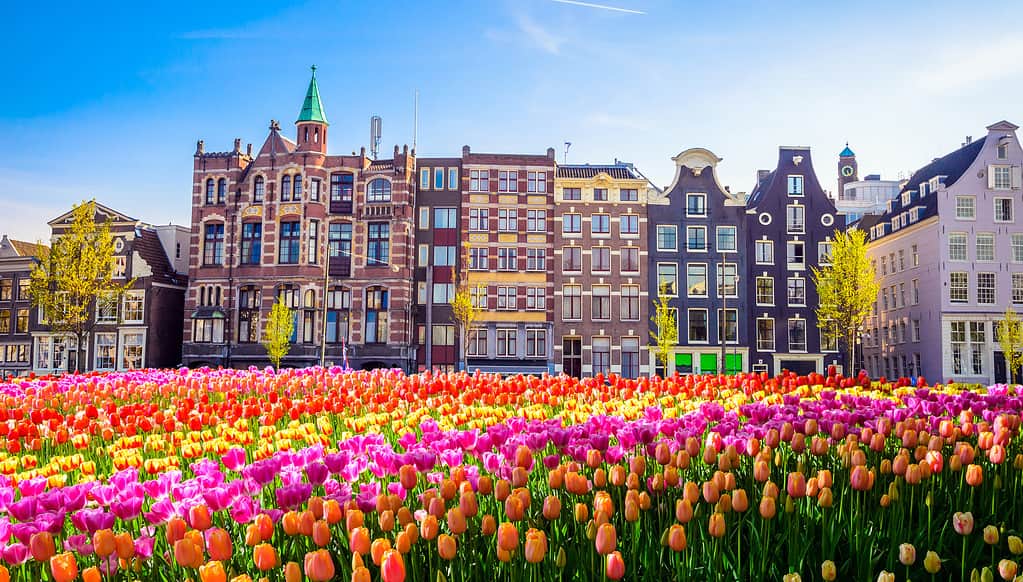
The Netherlands, another country that borders Germany, is famous for its tulips.
©Olena_Z/iStock via Getty Images
Another country that has had contretemps with Germany, the Netherlands now has an uneventful 357-mile border with its former nemesis. A powerhouse during its Republican period in the 16th century, the country is once again wealthy and influential. The Netherlands helped found both NATO and what evolved into the EU. Its currency is now the euro.
Also called Holland, the Netherlands is 16,164 square miles and has a population of 17,965,000. The official language is Dutch, as is the demonym. Like France, the Netherlands also has overseas territories such as Curacao, Sint Maartin, and Aruba. Indeed, France’s Saint Martin and Holland’s Sint Maartin are found on the same Caribbean island. Holland is also famous for reclaiming much of its land from the sea. These areas are called polders, and they are actually below sea level. This land reclamation began as early as the 14th century. Like Belgium, The Netherlands has mild winters and cool summers.
The government of the Netherlands is a parliamentary constitutional monarchy. As such, its head of state is King Willem-Alexander. As of this writing, the Prime Minister is Mark Rutte, though his government fell apart in July of 2023. New elections were held on November 22, 2023. The capital of The Kingdom of the Netherlands is Amsterdam, but its seat of government is in The Hague. The Dutch flag has three equal horizontal bands. The top is red, the middle is white, and the bottom band is dark blue.
Thank you for reading! Have some feedback for us? Contact the AZ Animals editorial team.

